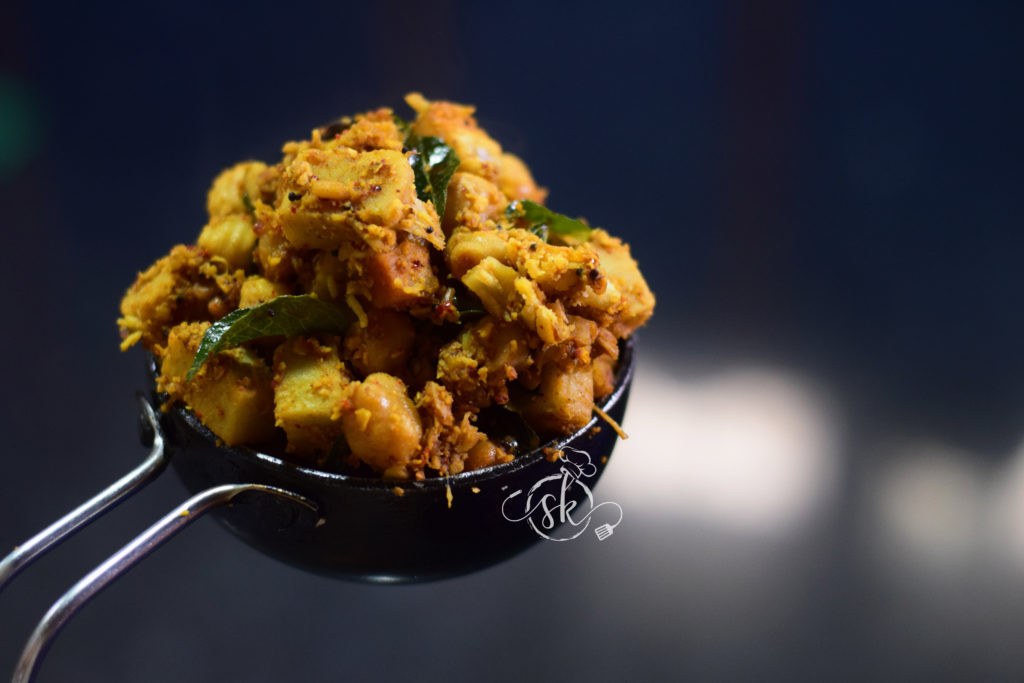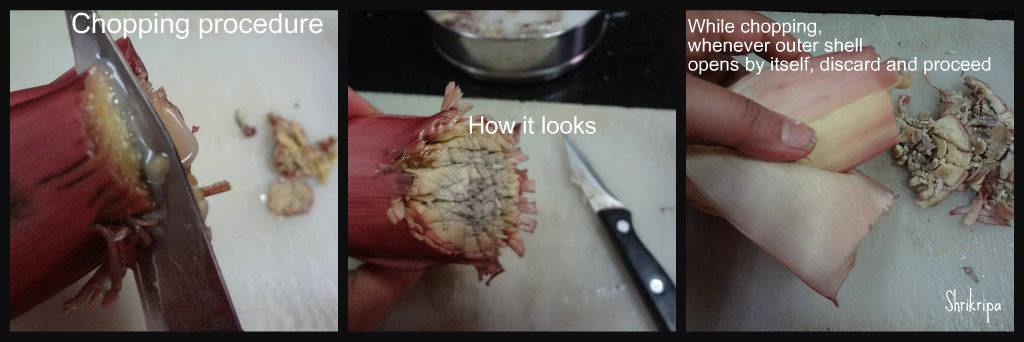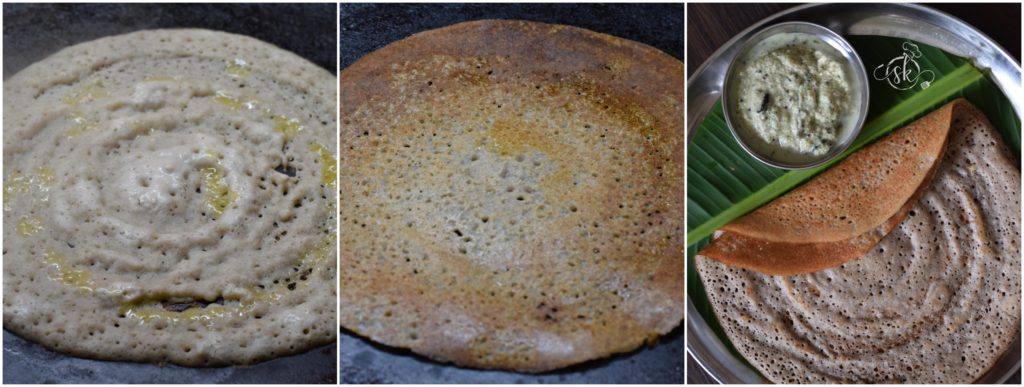Belong to the Alocasia family, and leaves are giant, glossy, resembles an elephant ear. Hence, it is also known as Elephant’s ear plant. Alocasia means “like the colocasia but not the colocasia”. Giant Taro is a good source of Vitamin C, Iron, and phosphorus.
In our native, leaves are used as an alternative to the plastic sheet, while sun drying papads or fryums in Summer months.
Which is best described as a “Stem crop” as the edible starchy stem is seen above the ground, which is light brown in colour, coarse outer surface grows upright, erect, in a cylindrical shape.
I have shared the details regarding Mundi Gedde/ Giant Taro in this post,
As most plant in this taro family, even this has Calcium oxalate, which itches our hand or mouth while eating if we do not handle it properly. Here, using hot boiling water and using the right amount of tamarind takes care to emit the itchiness.
Today, I will share one more traditional recipe of our region and one of the favourite side dishes you find in our wedding menu.

Ingredient:
Mundi/ Giant taro – around ¼ kg
White chickpeas – ½ cup
Salt- as needed
Jaggery – as needed
Red chilli powder – ½ tsp to 1 tsp
Turmeric powder – ½ tsp
tamarind – one gooseberry size (soak in 1 cup of water)
For Masala: Coconut – ¼ cup, Methi – ¼ tsp, Red chillies – 3
For Seasoning: Coconut oil- 1 tablespoon, mustard – 1tsp, urad dal – 1 tsp, red chilli – 1 (optional), curry leaves- 1 spring.
To garnish: raw coconut oil – 1tsp and curry leaves – 2 springs.
Method:

-Soak dry chickpeas overnight and cook in a pressure cooker for 3 to 4 whistles or until done.
-Now prepare the giant taro;
-We usually do not wash the Giant taro stem before cutting nor peeling. Spread one newspaper, remove all the outer brown woody skin, chop the stem into pieces as you needed.

-Wash those pieces in water by using a spatula, drain and put immediately in boiling water, cook until it is almost done, drain and proceed to the actual cooking. Now it is ready to cook.
-For palya, prepare the seasoning. Heat oil, splutter mustard, fry urad dal, add curry leaves.
-Add tamarind extract, salt, jaggery, red chilli powder, turmeric and, boil until water evaporates.

-Meanwhile, prepare the masala. Fry methi seeds in little oil, when it is light brown, add dried red chillies, fry until it is crisp. Dry grind these ingredients with coconut.
-Add the ground powder to cooked veggies and mix nicely, allow it to cook for 2 minutes by closing the lid.

-Now, garnish with raw coconut oil and curry leaves. Close the lid, switch off the gas. Leave this for a while. Before serving, mix nicely and serve.

























